Gabriel Metsu, National Gallery of Ireland
Gabriël Metsu (Dutch, 1629–1667), The Artist as the Prodigal Son, 1661. Oil on panel, 35.5 x 30.5cm © Gemäldegalerie Alte Meister, Staatliche Kunstsammlungen, Dresden Photographer
DUBLIN.- An exhibition of some 40 of the finest and most celebrated masterpieces by the Dutch 17th-century artist Gabriel Metsu (1629-1667) was formally opened in the National Gallery of Ireland yesterday by Mary Hanafin, T.D., Minister for Tourism, Culture and Sport.
The exhibition, Gabriel Metsu: Rediscovered Master of the Dutch Golden Age features works from all phases of the artist's career, including a number of recently discovered and restored works. It pays homage to his engaging genre scenes which vary from musical companies and amorous encounters, to revellers, street traders and kitchen maids. Examples of Metsu's lesser known yet wonderfully accomplished achievements in the fields of religious painting, portraiture and still life are also highlighted. The works in the exhibition are drawn from public and private collections around the world.
Born in Leiden in 1629, Metsu was, like his contemporary Johannes Vermeer, one of the most important painters of his age. Despite his untimely death at the age of 37, Metsu produced an outstanding oeuvre which provides a fascinating glimpse into love, life and fashion in 17th-century Holland. His remarkable mastery of the brush and talent for imbuing his figures with humanity and personality drew admiration from both artists and collectors of his time. This exhibition is an opportunity to re-evaluate an artist who was one of the most collectable artists of the 17th and 18th centuries.
Among the works in the exhibition are a number of recently discovered paintings that will afford a contemporary audience an opportunity to evaluate the artist afresh, including A Woman Artist (Le Corset rouge), (c.1661-4, Private Collection) which features Metsu's wife, Isabella de Wolff, who frequently modelled for her husband. The exhibition also reunites for the first time since the 18th century, two paintings which hung in the house of his most important patron, Jan Jacobsz. Hinlopen: A Visit to the Nursery (1661, The Metropolitan Museum of Art, New York) and A Portrait of Jan Jacobsz. Hinlopen and his Family (c.1662-3, Staatliche Museen zu Berlin).
Gabriël Metsu (Dutch, 1629–1667), A Woman Artist (Le Corset rouge), c. 1661–4. Oil on panel, 28.6 x 24.1cm. Private Collection. Image courtesy of the Board of Trustees, National Gallery of Art, Washington
Gabriël Metsu (Dutch, 1629–1667), The Visit to the Nursery, 1661. Oil on canvas, 30 1/2 x 32 in. (77.5 x 81.3 cm). The Metropolitan Museum of Art, New York. Gift by J. Pierpont Morgan in 1917. Photo © The Metropolitan Museum of Art, New York
Gabriël Metsu (Dutch, 1629–1667), A Portrait of Jan Jacobsz. Hinlopen and his Family, c.1662-3. Staatliche Museen zu Berlin. Image: State Museum, Berlin
Like Vermeer, Metsu began his career as a history painter. One of his earliest surviving biblical paintings, Dives and Lazarus (c.1650, Musée des Beaux-Arts, Strasbourg) is included here alongside The Dismissal of Hagar (c.1653-4, Stedelijk Museum De Lakenhal, Leiden), one of the highlights of Metsu's early career in Leiden.
Gabriël Metsu (Dutch, 1629–1667), The Dismissal of Hagar, c.1653-4, Stedelijk Museum De Lakenhal, Leiden
The exhibition shows that Metsu was a versatile artist who painted subjects ranging from interior scenes to portraiture. His favourite subjects though were women attending to their daily chores, selling food, or engaged in amorous pursuits: A Young Woman Selling Poultry (1662, Staatliche Kunstsammlungen, Gemäldegalerie Alte Meister, Dresden); A Woman Tuning her Cittern, Approached by a Man (c.1659-62, Museumslandschaft Hessen Kassel, Gemäldegalerie Alte Meister, Kassel).
Gabriël Metsu (Dutch, 1629–1667), A Young Woman Selling Poultry,1662. Oil on panel, 61 x 45 cm, Staatliche Kunstsammlungen, Gemäldegalerie Alte Meister, Dresden
Gabriël Metsu (Dutch, 1629–1667), A Woman Tuning her Cittern, Approached by a Man, c.1659-62. Oil on oak, 37 x 30 cm. Museumslandschaft Hessen Kassel, Gemäldegalerie Alte Meister, Kassel
Metsu painted himself at least ten times in various guises. In one of the most accomplished of his blacksmith scenes, A Cavalier Visiting a Blacksmith's Shop, (1654-6, The National Gallery, London), Metsu portrays himself as the comically pompous cavalier who orders horse shoes from the smith. In another painting, A Hunter Getting Dressed after Bathing, (c.1654-6, Private Collection), he depicted himself putting on his clothes after a swim in a brook.
Gabriël Metsu (Dutch, 1629–1667), A Hunter Getting Dressed after Bathing, c1654-6. Private collection. Image courtesy of IGRAT 2006 LLC.
In the early 1650s, Metsu moved to the larger and more prosperous city of Amsterdam which had a profound effect on his career; he soon transformed himself from a history painter into one of the leading painters of 'modern companies'.
His later works, painted in Amsterdam in the 1660s, demonstrate the artist's technical virtuosity and also reflect the stylistic influence of major genre painters of the time, most notably Gerrit Dou, Gerard ter Borch, Frans Van Mieris and Johannes Vermeer. Examples include The Intruder (c.1661-3, National Gallery of Art, Washington) and A Woman Composing Music, with an Inquisitive Man, (c.1664-7, Royal Picture Gallery Mauritshuis, The Hague). Among the works which particularly recall Vermeer are the companion pieces, A Man Writing a Letter and A Woman Reading a Letter (c.1664-6, National Gallery of Ireland, Sir Alfred and Lady Beit Gift, 1987) which are considered to be the artist's most renowned works. Another painting showing Vermeer's influence is The Sick Child (1664-6, Rijksmuseum, Amsterdam), one of the most iconic images of parental devotion in Dutch art. Towards the end of his life Metsu returned to painting religious subjects, the most dramatic of which is Christ on the Cross (1664, Pinacoteca Capitolina, Rome).
Gabriël Metsu (Dutch, 1629–1667), The Intruder, c. 1661–3. Oil on panel, 66.7 x 59.4cm. Image Courtesy of the Board of trustees, National Gallery of Art, Washington
Gabriël Metsu (Dutch, 1629–1667), A Woman Composing Music, with an Inquisitive Man, c.1664-7. Photograph: Royal Picture Gallery Mauritshuis, The Hague
Gabriël Metsu (Dutch, 1629–1667), A Man Writing a Letter, c. 1664–6. Oil on panel, 52 x 40.5cm. Photo © National Gallery of Ireland
Gabriël Metsu (Dutch, 1629–1667), A Woman Reading a Letter, c. 1664–6. Oil on panel, 52.5 x 40.2cm. Photo © National Gallery of Ireland
Gabriël Metsu (Dutch, 1629–1667), The Sick Child, c. 1664–6. Oil on canvas, 32.2 x 27.2cm. Collection Rijksmuseum Amsterdam
Also on display are the only two drawings that are securely attributed to Metsu: The Resurrection of Christ (c.1650-3, Musée Fabre, Montpellier) and Sketch of a Female Figure (c.1662-4, Städel Museum, Frankfurt am Main), which is a preparatory sketch for the painting, A Man Visiting a Woman Washing her Hands (c. 1662-4, Private Collection).
Gabriël Metsu (Dutch, 1629–1667), Sketch of a Female Figure, c.1662-4, Pen, 257 x 135 mm. Städel Museum, Frankfurt am Main
Gabriël Metsu (Dutch, 1629–1667), A Man Visiting a Woman Washing her Hands, c. 1662–4. Oil on canvas, 83.7 x 67.4cm. Private Collection. Photo © Mike Fear
The curator of the exhibition is Dr. Adriaan E. Waiboer whose Ph.D. dissertation and forthcoming catalogue raisonné on Metsu provided the knowledge base for the National Gallery exhibition. He is also editor of the accompanying catalogue to the show which documents the social context in which Metsu lived and worked. In his introductory essay, Dr. Adriaan Waiboer gives an insight into the artist's life, work and reputation both during his own lifetime and over the centuries. Another essay by his hand discusses Metsu's relationship with Vermeer. He says:
"Metsu enjoyed admiration and success as an artist during his lifetime. By the second half of the 18th century Metsu's pictures could be found in some of the most prestigious collections in France, including that of King Louis XV, while as many as 34 authentic works by Metsu were imported into England, with Parisian auctions as their main origin. In recent years however, Metsu has been somewhat eclipsed by the popularity of the Delft artist Vermeer, which has prevented people from properly admiring or evaluating Metsu's work. This exhibition hopes to rectify this and provide visitors with the opportunity to explore and appreciate the full extent of the artist's merits."
Gabriël Metsu (Dutch, 1629–1667), A Baker Blowing his Horn, c. 1660–3. Oil on panel, 36.5 x 30.7cm. Private Collection. Photo © Mike Fear
Gabriël Metsu (Dutch, 1629–1667), An Old Man Selling Poultry and Game, 1662. Oil on panel, 61.5 x 45.5cm. © Gemäldegalerie Alte Meister, Staatliche Kunstsammlungen, Dresden Photographer
Gabriël Metsu (Dutch, 1629–1667), A Woman Giving Fish Bones to a Cat (The Cat's Breakfast), c. 1661–4. Oil on panel, 33.5 x 27cm. Collection Rijksmuseum Amsterdam
Gabriël Metsu (Dutch, 1629–1667), An Old Man Holding a Pipe and a Jug, c. 1661–3. Oil on panel, 22 x 19.5cm. Collection Rijksmuseum Amsterdam
Gabriël Metsu (Dutch, 1629–1667), A Woman Writing a Letter, c. 1662–4. Oil on panel, 39.4 x 31.1cm. Image © IGRAT 2006 LLCA

/https%3A%2F%2Fprofilepics.canalblog.com%2Fprofilepics%2F1%2F0%2F100183.jpg)

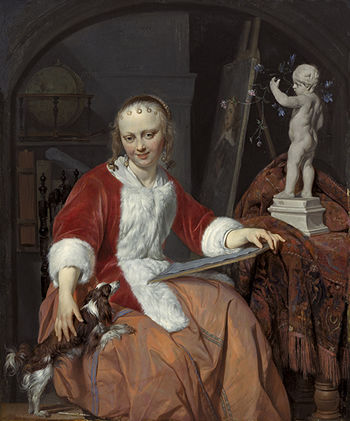


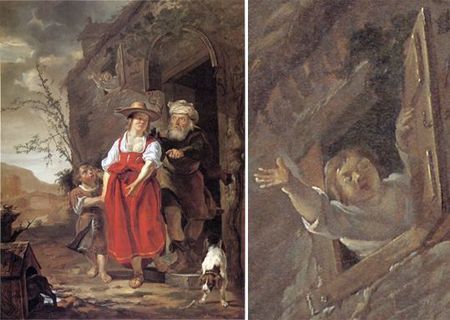
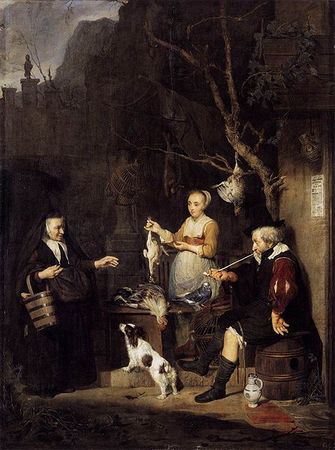
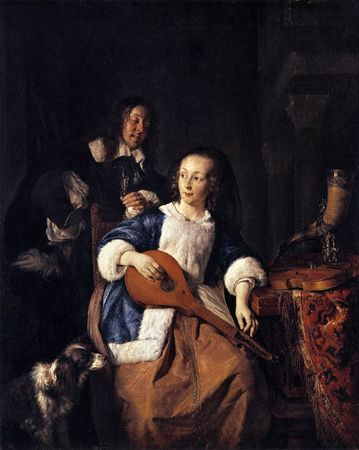


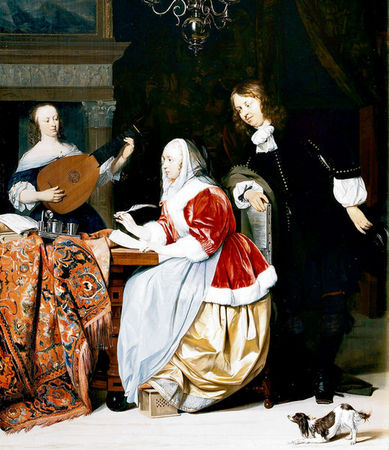



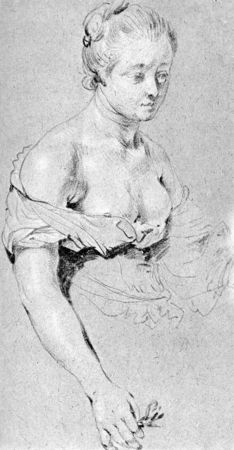


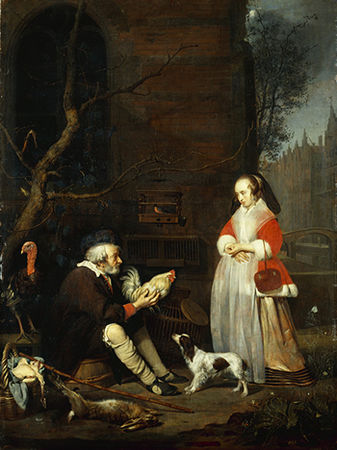
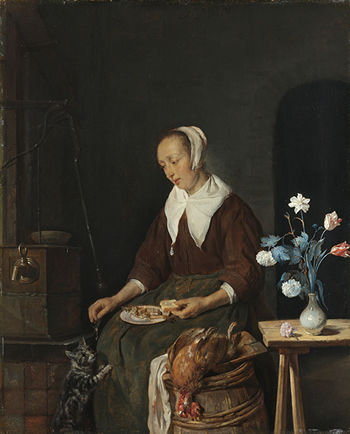




/http%3A%2F%2Fstorage.canalblog.com%2F63%2F11%2F119589%2F54643346_p.jpg)
/http%3A%2F%2Fstorage.canalblog.com%2F24%2F84%2F119589%2F49911085_p.jpg)
/http%3A%2F%2Fstorage.canalblog.com%2F36%2F41%2F119589%2F49096608_p.jpg)
/http%3A%2F%2Fstorage.canalblog.com%2F70%2F44%2F119589%2F48081330_p.jpg)